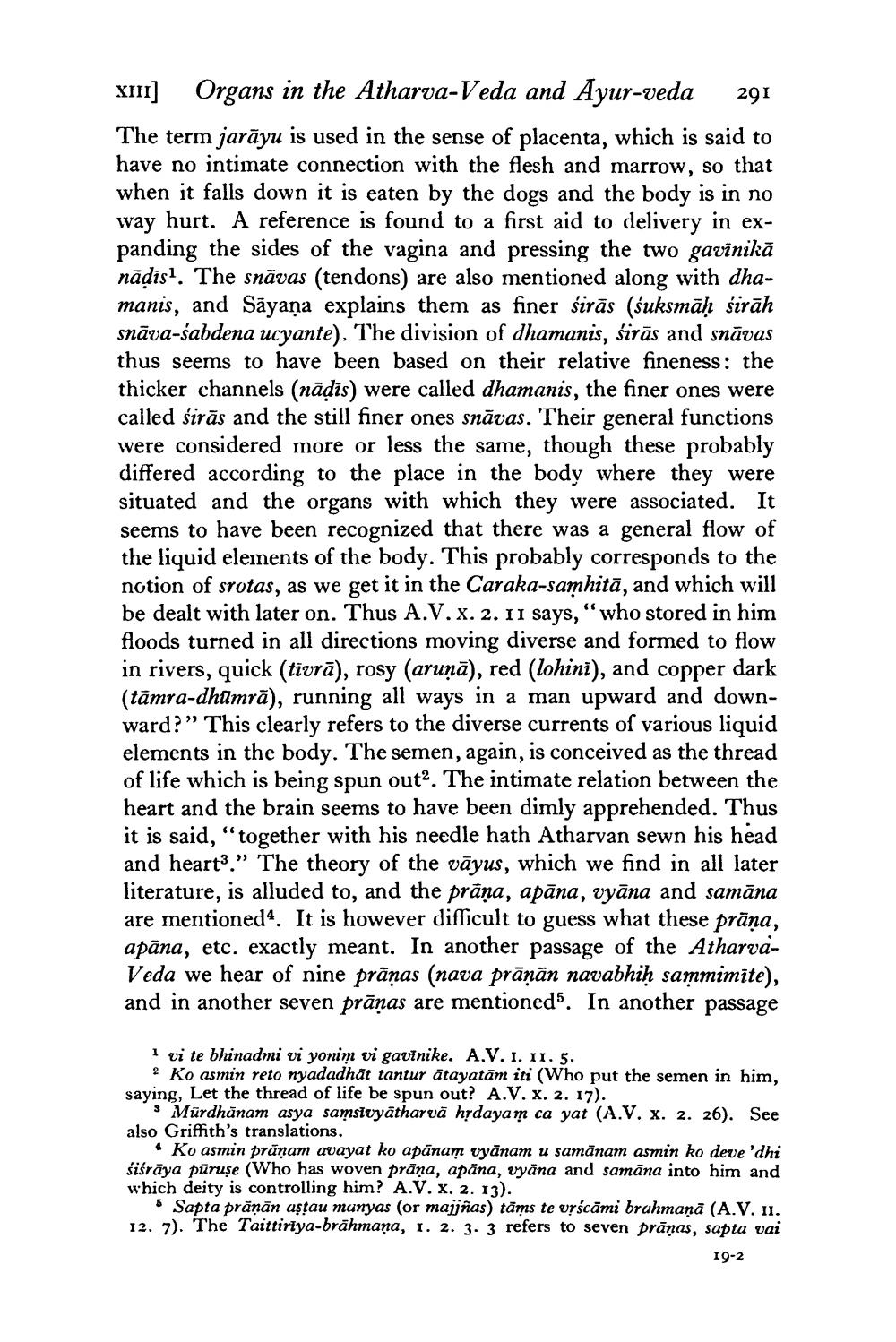________________
x111] Organs in the Atharva-Veda and Ayur-veda 291 The term jarāyu is used in the sense of placenta, which is said to have no intimate connection with the flesh and marrow, so that when it falls down it is eaten by the dogs and the body is in no way hurt. A reference is found to a first aid to delivery in expanding the sides of the vagina and pressing the two gavīnikā nādis?. The snāvas (tendons) are also mentioned along with dhamanis, and Sayaņa explains them as finer sirās (suksmāḥ śirāh snāva-sabdena ucyante). The division of dhamanis, śirās and snāvas thus seems to have been based on their relative fineness: the thicker channels (nādīs) were called dhamanis, the finer ones were called śirās and the still finer ones snāvas. Their general functions were considered more or less the same, though these probably differed according to the place in the body where they were situated and the organs with which they were associated. It seems to have been recognized that there was a general flow of the liquid elements of the body. This probably corresponds to the notion of srotas, as we get it in the Caraka-samhitā, and which will be dealt with later on. Thus A.V.x. 2. 11 says, “who stored in him floods turned in all directions moving diverse and formed to flow in rivers, quick (tivrā), rosy (arunā), red (lohini), and copper dark (tāmra-dhūmrā), running all ways in a man upward and downward?” This clearly refers to the diverse currents of various liquid elements in the body. The semen, again, is conceived as the thread of life which is being spun out. The intimate relation between the heart and the brain seems to have been dimly apprehended. Thus it is said, "together with his needle hath Atharvan sewn his head and heart3.” The theory of the vāyus, which we find in all later literature, is alluded to, and the prāna, apāna, vyāna and samāna are mentioned. It is however difficult to guess what these prāna, apāna, etc. exactly meant. In another passage of the AtharvaVeda we hear of nine prānas (nava prāņān navabhiḥ sammimīte), and in another seven prānas are mentioned5. In another passage
i vi te bhinadmi vi yonim vi gavinike. A.V. I. II. 5.
2 Ko asmin reto nyadadhāt tantur ātayatām iti (Who put the semen in him, saying, Let the thread of life be spun out? A.V. X. 2. 17).
3 Mürdhānam asya samstvyätharva hrdayam ca yat (A.V. X. 2. 26). See also Griffith's translations.
"Ko asmin prānam avayat ko apānam vyānam u samānam asmin ko deve 'dhi śiśrāya puruse (Who has woven prāņa, apāna, vyāna and samāna into him and which deity is controlling him? A.V. X. 2. 13).
3 Sapta prāņān aştau munyas (or majjñas) tāms te vrścāmi brahmanā (A.V. 11. 12. 7). The Taittiriya-brāhmana, 1. 2. 3. 3 refers to seven prānas, sapta vai
19-2




